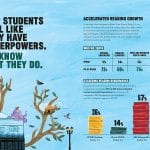Students in the Design Activism Service Learning class don’t just make work for the classroom, all of their assignments are ones that end up out in the real world. Throughout the semester students work with community partner organizations to create design work with the community, while simultaneously creating their own works of design activism and advocacy.
In the days following the 2016 election, Design Professor Rachel Beth Egenhoefer got to work on creating a new course. “We always talked about creating a service learning (SL) course for the Design major, but we had other projects taking priority. After November 2016, I knew I had to get this course going right away” she recalls. All students at USF are required to take a service learning or community engaged learning course as part of their core requirements. The Design Activism course blends the social justice mission of the university with skills and concepts in the Design program while providing a valuable experience for everyone. “It’s an incredibly opportunity for students to make real world projects that make a difference in the community” Egenhoefer says, who taught the course for a second time in Fall 2018.
Community Partner Projects
This past fall, students worked with twelve different community partners to create a range of projects including websites, brochures, posters, interactive maps, videos and more. Working with community partners students gain skills in communication, working with stakeholders, creating drafts and incorporating feedback, budgets and timelines, while also gaining a deeper understating of issues in the community. At the end of the semester, all of the community partners were invited to campus for a celebration of the work completed. Students and community partners alike shared that they benefited in multiple ways from working together throughout the semester.
- Annual report for Mission Graduates by Danielle D’Onofrio
- Interactive annual report website for 826 Valencia by Zach Pacheco
- Graphics for 350 Bay Area by Jennifer Brooks
- Branding and identity for Eco Muebles Goyena with Vivendas Leon by Josh Oakley
- Website for the Parent Advisory Board by Pengxin Guo
- “I voted” installation for the McCarthy Center
Design Advocacy Projects
Simultaneous to working with their community partners, students are also charged with creating their own projects that advocate for a cause or issue that they are personally passionate about. Students created a range of projects including interactive installations, games, social media campaigns, and more on issues related to gun control, homelessness, toxic masculinity, trans rights, climate change and others.
In working on this project, I felt connected to something much larger than myself. It is a humbling experience to be able to work on a project that has the potential to make a lasting impact. One of the things I appreciate most about working on iterative projects whose scope lies in the real world and not just the classroom is the process of growing and learning. It is incredibly fulfilling to use my voice to tap into that something that is larger than all of us, for the sake of others. It is so rewarding to do work to make a difference and not have it be about me at all. – Josh Oakley, Design senior

DISPENSE-O-MATIC 2018: Thoughts And Prayers Dispenser by Josh Oakley “Like clockwork, after each mass shooting, politicians from both sides of the aisle automatically send their thoughts and prayers to the victims and their families. In the political maelstrom that ensues each incident, it is the victims themselves who get lost, they become political fodder robbed of their lives by senseless violence and stripped of their humanity by cowardly political leaders.”

Everyone Deserves a Home by Rose Gluck. “This interactive installation simultaneously meant to educate people about homelessness and invite them to participate in direct action. The piece, located at Lake Merritt in Oakland was meant to disrupt the landscape, thus intriguing passersby. The table contained prompts for people to fill out, the plates included statistics and information about homelessness in Alameda County, and the chairs contained postcards that were pre-addressed to Oakland Mayor Libby Schaaf. The participant is meant to feel “at home” while learning and reflecting about homelessness. I wanted the piece to feel inviting and safe, while learning about really jarring statistics. The piece was used successfully, as people wrote on both the table and postcards.”






